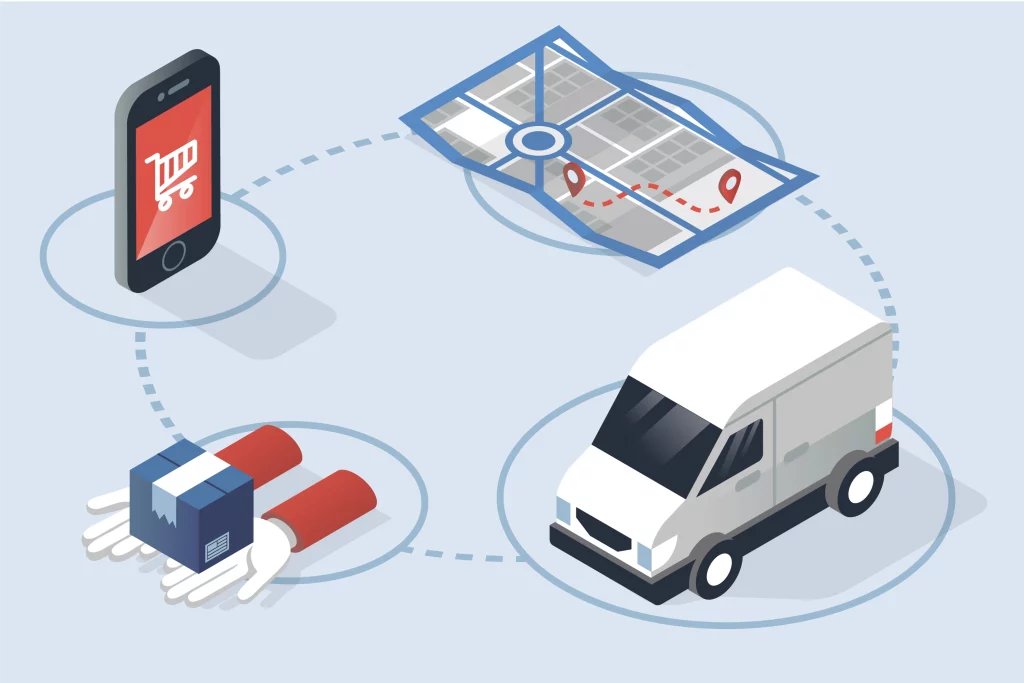Fleet Monitoring System: What Exactly Is It?
Brian Taylor December 12, 2022
An effective fleet monitoring system helps businesses of all sizes get more from their fleets by managing vehicles, drivers, equipment, and jobs more effectively. The best fleet monitoring systems can make the procedure simpler, more efficient, and more economical. You can use this program to manage your fleet’s vehicles, trucks, and vans, from scheduled maintenance and component inventories to real-time location tracking and document storage.

Types of Fleet Monitoring Systems
Fleet monitoring systems come in different forms. Each offers specific tools designed to help companies manage vehicles, reduce costs, and improve safety. Below are some of the most effective options available today.
AUTOsist
Best for: Small to mid-sized fleets
AUTOsist helps managers keep fuel and maintenance data organized in one place. It includes service reminders, real-time tracking, and maintenance logs. As a result, it’s ideal for teams looking for a straightforward and dependable system.
Key Features:
- Real-time location tracking
- Odometer syncing
- Inventory and parts tracking
- Maintenance reminders and service logs
Although it doesn’t include advanced analytics, its focus on core maintenance tasks makes it a strong choice for growing businesses.
Fleetio
Best for: Full fleet control with mobile access
Fleetio gives businesses a complete view of vehicles, equipment, fuel, and total cost. The system works well with fuel cards, repair shops, and other telematics services. In addition, it includes a user-friendly mobile app for drivers.
Key Features:
- Real-time tracking of fuel, mileage, and vehicle status
- Easy purchase order and parts tracking
- Detailed service history logs
- Unlimited user access
- Native mobile app (Fleetio Go)
Thanks to its wide range of features, Fleetio helps reduce manual work and supports better planning.
Azuga
Best for: Simple setup and driver safety
Azuga is known for being easy to install and use. While it offers the same tools as other platforms, its clean interface shortens the learning curve. As a result, it’s great for companies focused on improving driver safety and cutting fuel costs.
Key Features:
- Real-time vehicle monitoring
- Driver behavior scores
- Predictive maintenance
- Geofencing alerts
- 24/7 customer support
Because of its plug-and-play design, Azuga allows teams to start tracking quickly without complex setup steps.
Rhino Fleet Tracking
Best for: Companies that need custom reports
Rhino Fleet Tracking gives managers detailed insights into vehicle use, routes, and driver habits. It also offers real-time GPS data and alerts for off-hour use or long idle times.
Key Features:
- Real-time tracking of vehicle routes
- Alerts for speed, idle time, and fuel use
- Ignition on/off reports
- Custom notifications and dashboards
- Task and time tracking
As a result, this system helps companies improve efficiency while keeping drivers accountable.
Onfleet
Best for: Delivery-based operations
Onfleet is built for companies that manage frequent deliveries. It works well for food, pharmacy, courier, and retail sectors. With strong mobile support and advanced routing tools, Onfleet simplifies dispatch and improves the customer experience.
Key Features:
- Real-time driver tracking
- Route optimization and auto-dispatch
- Proof of delivery with photos
- ETA alerts and customer messaging
- Mobile apps for iOS and Android
- Custom reporting and analytics
With Onfleet, teams can manage tasks, monitor drivers, and communicate with customers—all in one platform.

Pros of Fleet Monitoring Systems
Managing a commercial fleet well can lead to better productivity, lower costs, and improved safety. It also helps companies provide a better customer experience. A fleet monitoring system gives managers a real-time dashboard to track vehicle performance, maintenance, and daily tasks.
With today’s technology, it’s easier than ever to monitor key metrics like vehicle location, driver behavior, fuel usage, and delays—all in real time.
Here are some major benefits of using these systems:
- Less paperwork and fewer mistakes: Automated data reduces the chance of human error.
- Live tracking of all vehicles: Know whether vehicles are moving, parked, or idle.
- Better fuel efficiency: Smarter routing and reduced idle time save money.
- Happier customers: Accurate arrival times and fewer delays boost satisfaction.
How to Choose the Best Fleet Monitoring System
When selecting a system, it’s important to look beyond just real-time tracking. While core features like maintenance alerts and GPS are vital, several other tools can make a big difference.
1. Driver Control and Behavior Monitoring
One key benefit of fleet systems is the ability to track driving habits, such as speeding, harsh braking, and long idle times. By giving drivers feedback, managers can:
- Improve driving performance
- Reduce the risk of accidents
- Lower fuel consumption
- Encourage safe, long-term driving habits
Furthermore, companies that support driver safety may also improve retention by showing they care about employee well-being.
2. Service Hours Tracking
In addition to safety, it’s important to track work hours. A good system helps ensure drivers follow legal limits for driving and resting. Most platforms track engine time, speed, and driving hours. Some also let drivers log their shifts through DVIRs (Driver Vehicle Inspection Reports).
If you fail to monitor this data, your company could face legal penalties or lose licenses.
3. GPS Tracking Technology
GPS is a must-have in any modern fleet system. It lets managers know where each vehicle is, and whether it’s driving, parked, or idling. This helps:
- Improve dispatch and routing
- Send accurate updates to customers
- Plan more efficient trips
Most GPS tracking systems work using either a driver’s smartphone or a plug-in vehicle device.
4. Fleet Security System
Security features are also essential. For example, if a vehicle sits idle too long with the engine on, the system can alert the driver or manager. This helps:
- Prevent fuel waste
- Catch unusual activity early
- Keep vehicles safe from misuse
As a result, you gain more control and peace of mind.
5. Operations Management Tools
Managing a fleet involves more than tracking vehicles. You also need to plan routes, assign jobs, and watch fuel usage. Many fleet systems analyze past trips to suggest faster, more efficient routes. This leads to:
- Shorter delivery times
- Fewer late arrivals
- Better customer experiences
6. Fuel Management
Fuel costs often make up a large part of a fleet’s expenses. That’s why many systems include tools to track and reduce fuel use. By planning smarter routes and cutting idle time, companies can save money over time.
7. Mobile App and Device Compatibility
Modern fleets rely on mobile apps. Choose a system that works on both iOS and Android, so your drivers can:
- Log inspections and deliveries
- Report problems quickly
- Stay in touch with dispatch
A system that works on any common smartphone helps avoid tech issues on the road.
8. Software Integrations
Lastly, check how well the system works with your other tools. It should connect smoothly with:
- CRM systems
- Inventory tracking
- Payroll and accounting software
- Maintenance platforms
- Fuel card services
These connections allow data to flow between systems. This reduces errors and saves time.
A good system should also generate reports on driver habits, fuel usage, and engine hours. These reports help you improve performance and protect your company from legal issues.
How Much Do Fleet Monitoring Systems Cost?
Prices vary depending on your needs. Even small fleets may require an upfront investment in hardware and software. However, many companies find the long-term savings worth the cost.
Here’s a general range:
- Basic plans: Around $250/year
- Advanced packages: Up to $6,800/year
Costs depend on:
- The number of vehicles
- Features you choose
- Payment terms
- Extra services or integrations
While premium plans cost more, they often include all features, saving time and improving results over the long run.
Conclusion
A well-chosen fleet monitoring system can help your business cut costs, stay organized, and deliver better service. When picking a solution, look for:
- Real-time GPS tracking
- Maintenance and service tools
- Simple, clear design
- Strong customer support
- Easy software integrations
By using the right system, your fleet can become more efficient, safe, and reliable—giving you a lasting edge over the competition.
{BUTTONS}Reference
[1] Purpose Of Fleet Management “What Is Fleet Management? Fleet Management Definition” Motive Technologies, Inc., 2022
[2] Complications Of Operating A Fleet “Fleet Management Benefits” Mix Telematics, 2022
[3] Optimize Operational Costs “How To Justify The Cost Of Fleet Management Software” Vector, Inc., 2020





